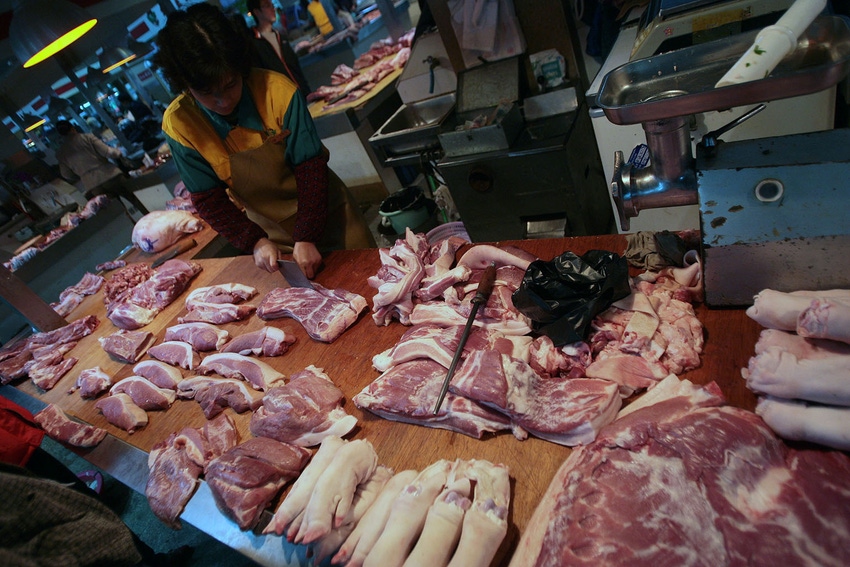Severe supply rationing has begun
Sometimes the futures market, in rare instances, is simply not in tune or not capable of anticipating major changes in fundamental developments until they actually rear their head.
March 25, 2019

Last month’s hog article was most difficult for me to write. After covering shorts, all shorts early last fall and accumulating call option positions, large positions during the fourth quarter and part of January, hog prices continued to collapse during February. Gaps on the charts left from last August, incredibly, were filled with April hogs driven downward and well below the fall lows. Cash hog prices reached a 20-year low, hams were trading at 10-year lows and loins were so cheap that data bases going back 40 years had never seen prices so low. Indeed, I had more than one, and in fact several, suggest to me directly that I had no idea what I was talking about.
As I re-read last month’s article I relished the fifth paragraph. I quote “I still contend that the African swine fever story will dominate the fundamental news before the end of the year. I’m not interested in downplaying the impact for fear of getting my producers trapped in a rapid acceleration of hog prices at some point this spring/summer.” End of quote.
Sometimes the futures market, in rare instances, is simply not in tune or not capable of anticipating major changes in fundamental developments until they actually rear their head. We (the market) have known about ASF in China since last fall. However, the market was unable or unwilling to come to terms with the situation until strong evidence surfaced. In my opinion, this evidence was the rapid escalation of cases reported in Vietnam in early March. In a one week period, upon learning that ASF had been detected in Vietnam, more than double the cases had been reported than total cases reported out of China over a seven month period. This is when the market finally began to realize, or believe that the situation was much worse in China than what had been reported.
Two items are key. First, ASF in China is going to have a long tail, a very long tail. They’ll likely still be fighting this disease three to five years from now. It will totally change the manner of hog farming in China. Larger, more efficient and vastly more secure farms will replace the courtyard producer of today which comprises from 30% to 40% of the hog herd. Perhaps 10 years from now China will be much more self-sufficient in pork production. That is, however, a long way down the road. Second, because of panic breeding herd liquidation that occurred this winter, the magnitude of the situation is amplified dramatically. This is the key development which was misunderstood or misjudged by myself this winter. This caused a short term flood of pork in China, and contributed to the depressed hog market in the fourth quarter and extending into February.
Cutting right to the chase, right to the point, my number one advice to clients, whether producer hedger or spec, DON’T GO SHORT THIS MARKET. Don’t pay any attention to overbought indicators. A rationing process has begun and will continue until or unless we are stricken with ASF in America. The function of market prices is to ration supplies. Markets don’t ration demand. They curb demand with high prices. Markets, through changes in price, ration available supply. If China is going to need to replace 20% to 40% of their production, down the road, there will not be enough pork in the world. Sharply higher prices will be required to ration the supply. This is the process that has started.
What will make this move in cash, cutout and futures so dramatic is two-fold. First, the sudden realization that we need to ration supply was actually realized when prices were still at historical lows. The market now needs to swing the pendulum clear to the other end of the spectrum. Second, because U.S. hog producers had been losing money, large amounts of money in their operations for at least six months, in tandem with the threat that ASF can possibly develop in the U.S., it’s highly likely that lending funds dried up and contraction of U.S. hog breeding numbers will be revealed on the upcoming hog and pig report. Indeed, the market signals, up and until two weeks ago, was to contract, not expand. The quarterly hog and pig report is scheduled for release on Thursday, March 28.
My advice to our hedge clients is to secure puts to establish a price floor while leaving the upside to prices wide open. As long as the U.S. remains disease free, this is your time, your time to reap a generous profit.
Don’t hesitate to contact me if you need help in executing a hedging and or trading scheme.
Source: Dennis Smith, who is solely responsible for the information provided, and wholly owns the information. Informa Business Media and all its subsidiaries are not responsible for any of the content contained in this information asset.
About the Author(s)
You May Also Like





